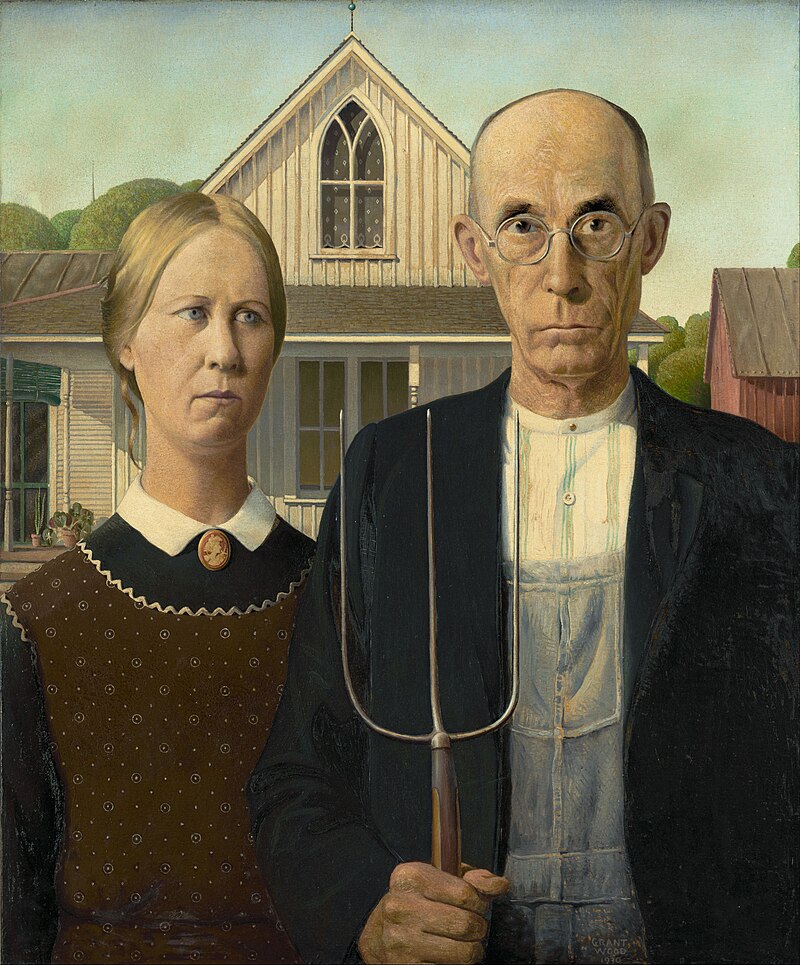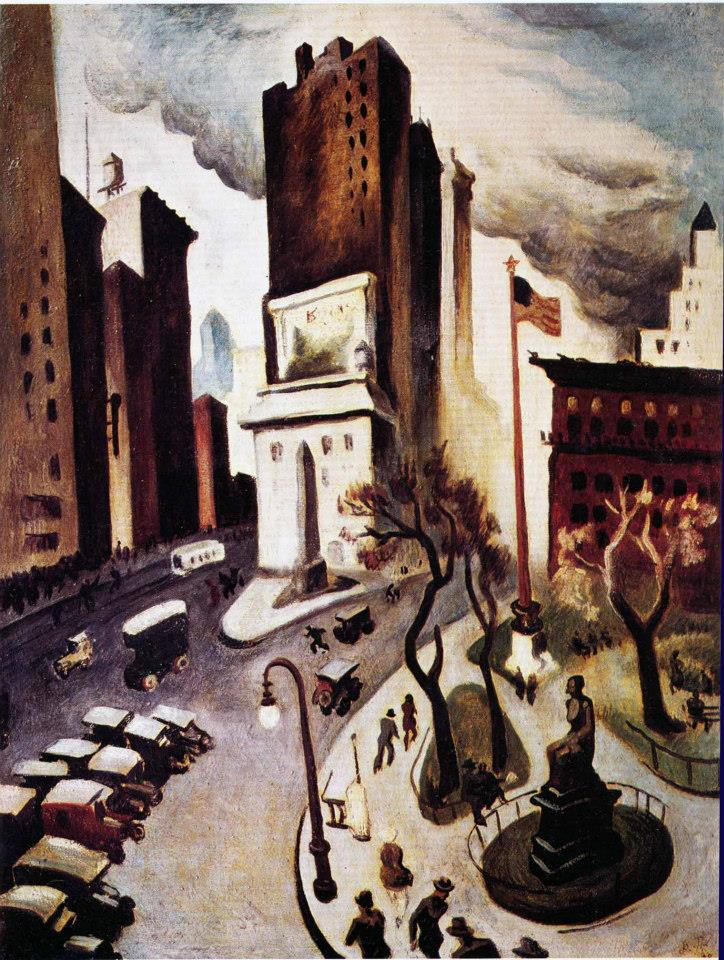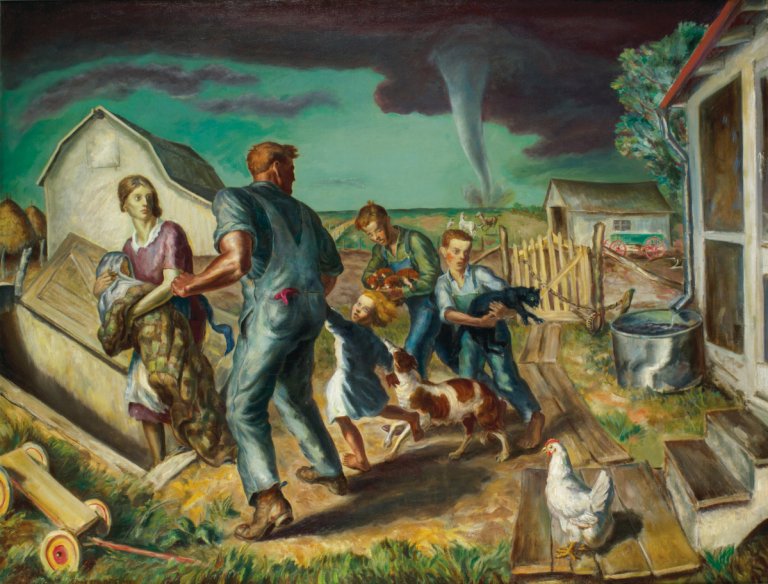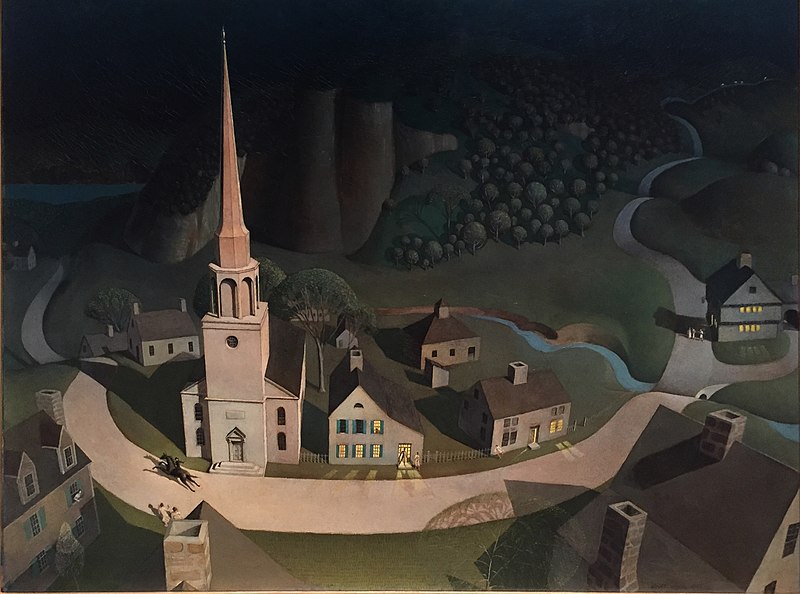Krispin Joseph PX
When the Great Depression started, people started to return to home, the countryside and the village. Artists start to study the regional element of their life and land. This quest for regional features intends to bring the artistic practice back into a path of resistance against the art capital or capitalism.
Regionalism is an art movement dated 1925-45 focused on more local than abstract or ‘international subjectivity’, illustrating the representational subject matter. When the Great Depression created the problem of material scarcity, artists started to cover this scarcity with new forms of storytelling about their surroundings. Artists look into the surroundings for the subject, not only to draw but to resist the existing narration. In this movement, artists used to depict the scenes of rural Midwest, American folklore, or the hard times during the Great Depression.

This realistic modern art movement starts from regional thinking about Art, encircled with paintings, murals, lithographs, and illustrations. All these forms bring a fresh dimension and look into the art practice that helps artists to drive the time of the Great Depression. This art movement reached popularity in the 1930-35 and was widely valued for its promising pictures of the American heartland during the Great Depression.
In style, Regionalist artist follows the rule of depicting conservative and traditionalist way. That form appealed to popular American sensibilities same time, strictly opposing the perceived domination of French Art. Thomas Hart Benton, John Steuart Curry, and Grant Wood—all Midwesterners—are the artists known for this style. Critique believes that Regionalism is rooted in American art schools such as the Hudson River School (the 1860s), and the artist Grant Wood is considered a prominent figure in this country’s Art. Regionalism is an invention of the artist’s desire to connect and depict the ‘country’. The artists of this genre do not intend to narrate a universal theme. Some painters like Stuart Davis and Edward Hopper are also considered Regional painters while depicting city life.

Midwestern farm landscape and the history of the native Midwest region is the central theme of this genre painting in the peak time of Regionalism. Regionalist artists paint from the inspiration of local traditions and folk culture. The Great Depression time boosts this Regionalist concept of American values and lifestyle through their Artwork, symbolising the American people’s strength and endurance. During the Depression, the Works Progress Administration (WPA), the Federal Art Project, and the Treasury Section of Painting and Sculpture commissioned work to the artists, using Regionalism as their unofficial style.
Modernism and the concept of Art and life changed a lot after world war II, and the modernist style of Art became prominent in Western Art. American artists are sceptical about this art style because Modernism was not defined in the American context. American artists frequently quested for the ‘American’ style and rejected the French School of Art practice.

American artists rejected European abstract Art, and some chose Academic realism as their medium, and they started to depict rural scenes. Meanwhile, America remains a heavily agricultural nation with the most landscape view of peasants and crops.
Artists like Thomas Benton, John Curry, and Grant Wood gave their Art a local character that offered its realism. They embrace the ideas of stories of American folk and agriculture, while the European artists make theories and styles. The work of Grant Wood is based on American reassuring and nostalgic themes and the elements of satire and criticism. John Curry and Benton take a more straightforward turn into the narration of the American soul, while both follow the darker emotional and moral chronologies in their work.

Regionalism is a version of Social realism in Art, and American scene painting brings these terms in an umbrella term. American scene painting portrays the ideas of nationalism and romanticism together and everyday American life in a format of Art that easily decipher. In the aftermath of World War II, cities become industrialisation, and artists start depicting this manoeuvre.

Credit: Google Art and Culture





